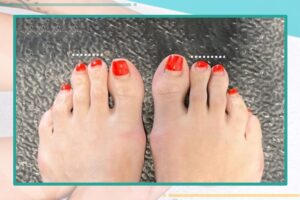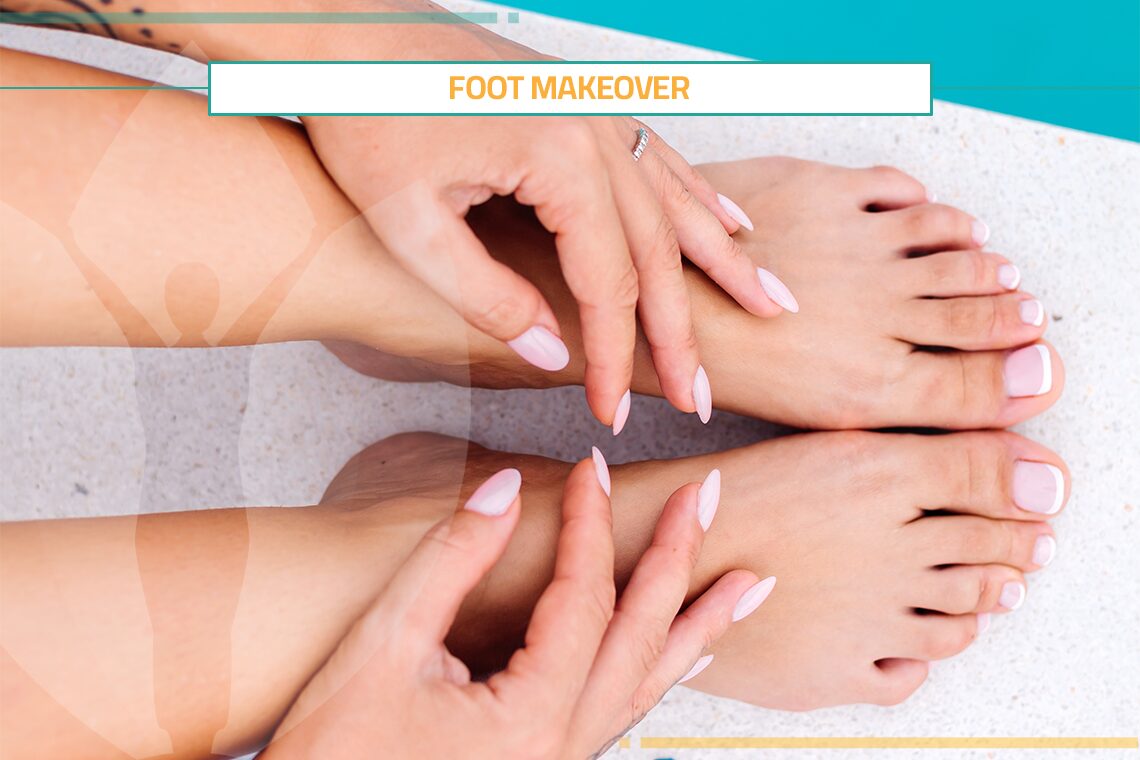Foot Makeover
Many people in today’s society may disregard foot cosmetic surgery and look for Foot Makeover as needless vanity, which undervalues and misunderstands the procedure.
Naturally, it can be thus, but more often than not, it has a beneficial function and is an investment in a better life. It can improve one’s quality of life, body image, self-worth, and self-esteem.
If it weren’t for the fact that it frequently provides relief from recurrent and frequently worsening pain, cosmetic surgery—especially on the feet—might not be a first choice for many of us. In these situations, surgery also fulfills the noble goal of regaining self-confidence and a sense of well-being.

Foot Cosmetic Surgery
It is impossible to overstate the advantages of long-lasting pain alleviation. Although most of us experience pain at different times in our lives, chronic pain can alter one’s emotional perspective and negatively impact attitudes and social interactions with friends and family.
It is difficult to suffer in a sweet way; like many things in life, it is easier said than done. A person’s mood and emotional state can be greatly enhanced by experiencing pain alleviation, increased mobility, and improved attractiveness.
We provide the most up-to-date, highly regarded, state-of-the-art minimally-invasive treatments covering every facet of foot and ankle care for people in Turkey and abroad who are looking for assistance with their feet.
Follow the whole procedure of Dental Implant
Foot Makeover Near Me
Our individualized treatment programs at Natural Beauty Turkey are made to meet the specific requirements of each patient.
Among the many cosmetic and functional surgical procedures we offer for the foot, ankles, and knees are podiatric care, treatment, and therapy; hammertoe correction; bunion and bunionette removal; corn removal; toe shortening, toe lengthening, and toe straightening; side tucks; and toe tucks.
What`re the Types of Foot Cosmetic Surgery?
Typically, cosmetic foot surgery is done as a day case. Depending on the patient’s preference, either local or general anesthesia may be used during the procedure. Common foot cosmetic surgery procedures include:
-
Bunion Surgery:
Also called a hallux valgus deformity, is a hereditary disorder in which the big toe extends outward toward the outside of the foot, resulting in a noticeable bump on the first metatarsal head on the inside of the big toe joint. This is more prevalent in women than in males, and it gets worse with shoes. The majority of surgeries are done on patients in their twenties and beyond, and the majority of symptoms start in their late teens. The metatarsal is repositioned, resulting in a smaller foot and a straight, cosmetically better toe position.
-
Toe Straightening and Shortening:
Bunion deformity or an imbalance in the function of the tendon around the toes are the main causes of toe deformities. The tiny joints cause the toes to become twisted and crooked. Over time, this will cause corns to form on the top of the toes due to footwear discomfort and irreversible retraction. Instead of k-wires protruding from your toes, modern surgical techniques employ inside implants. For a straighter and somewhat shorter appearance, the toe’s position is corrected. In terms of appearance, the scars are minimized and concealed.
-
Crossover Toe Surgery:
The condition known as crossover toe occurs when the second toe shifts sideways and crosses over the big toe. It frequently coexists with bunions. Depending on the toe’s position and the degree of the issue, cosmetic foot surgery choices for crossover toe may differ; nonetheless, surgery typically entails removing a portion of the bone and either mending damaged ligaments or, in certain situations, fusing the joint together. This effectively realigns and realigns the toe. If a bunion coexists with a crossing toe, the bunion may require concurrent correction.
-
Toe Tuck Surgery:
A type of cosmetic toe surgery called toe tuck surgery is performed when the soft tissue, especially the fat, around the toes enlarges, causing bulbous fat accumulation. In order to protect the nerves and blood arteries surrounding the toe and decrease the overall size of the toe where soft tissue enlargement occurs, the toe tuck surgery would basically entail removing some of the skin and extra fat tissue. This could be utilized in conjunction with any necessary toe shortening.
5. Minimally-Invasive Corn Removal Surgery:
Corns are two types: hard and soft. Hard corns are small, raised, dense skin areas formed at the top of the toes due to bone pressure. They can cause pain and open wounds. Soft corns are more painful and often manifest as painful lacerations between the fourth and fifth toes. They are more likely to become infected due to the natural moisture and sweat between the toes. Poor fitting shoes and wearing shoes without socks can also cause corns. Minimally-invasive corn removal surgery can help alleviate these painful deformities and lead to a more joyful and fulfilling life.
How to Get Rid of Finger Fat?
Foot Makeover Cost
The degree of surgical correction needed determines the cost of cosmetic foot surgery, which does vary. A bunion repair would normally cost around £5000. If both the bunion and the smaller toes need to be fixed, the price may reach £7000 per foot. This would come to around £2000 if one isolated hammer toe needed to be fixed.
Foot Slimming Surgery or Cinderella Foot Surgery
The Cinderella Foot Surgery or Foot Slimming Procedure are other common names for cosmetic foot surgery for wide feet, primarily in the Turkey. Patients frequently have bunions on either side of the forefoot due to a big toe bunion and a tailor’s bunionette that affects the fifth toe area. This would provide the illusion of a broad forefoot that expands and splays, particularly while barefoot or wearing flat shoes. Both practical issues, such as pain in the Bunion and Bunionette. Particularly while wearing shoes, and aesthetic issues, such as broad feet, may arise from this.
The Cinderella foot procedure corrects Bunion and Bunionette deformity by resetting the first metatarsal bone and the fifth metatarsal using Scarf Osteotomy. Internal screw fixation holds the bone in place for 6-8 weeks, allowing early mobilization without casts. After healing and resolving swelling, the patient typically has a narrower foot.





